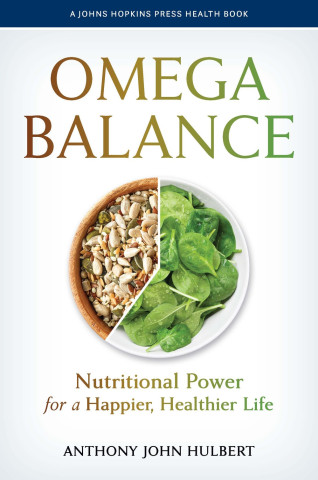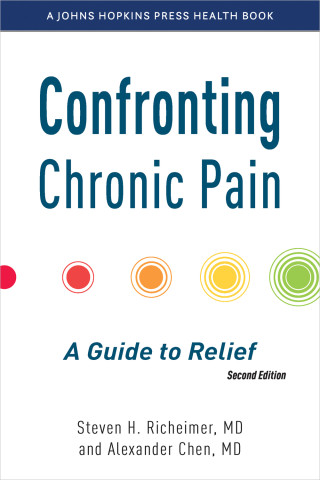
Reviews
Omega-fatty acids are important to our health, and science now shows that there is more than one type, available from different dietary sources. Professor Tony Hulbert expertly unpacks the science and shares the practical consequences for our dietary choices in this carefully researched and very readable book.
Omega Balance emphasizes two important concepts that will be new to most of the public. The first is that, in the food chain, both omega-3 and omega-6 originate from plants, with 'seeds' being the dominant source of omega-6 while 'leaves' are the dominant source of omega-3. The second is that, because these fats compete for their position in cell membranes, it is the balance between them in our whole diet that is the important nutritional factor.
Tony Hulbert's deep dive into Omega-3s is essential reading for the medical community. His 'whole-of-diet' understanding untangles decades of misguided dietary advice and shows just how important a healthy balance of Omega-3s and Omega-6s really is.
I sort of knew that omega fats were important, but after reading Professor Hulbert's excellent book I now understand just how important they are and why. This is a fascinating read and one that anyone interested in the relationship between health and nutrition will enjoy.
Omega Balance is a carefully reasoned science book proposing a biological basis for the modern epidemic of several chronic diseases. It is an extremely valuable book to have all this literature reviewed and interpreted all in one place.
Book Details
Preface
I. Food and Diets
1.. Essentials of nutrition: an evolutionary perspective
The discovery that certain fats are essential in the human diet
How nutrients become essential components of the diet:(i)
Preface
I. Food and Diets
1.. Essentials of nutrition: an evolutionary perspective
The discovery that certain fats are essential in the human diet
How nutrients become essential components of the diet:(i) vitamins: ascorbic acid as an example(ii) the building blocks of proteins: amino acids
Being an animal
2. Omega-balance of foods: seeds, leaves and meats
The "omega-balance" concept
Vegetable oils and their products are the dominant source of omega-6
Nuts and grains provide omega-6 but negligible omega-3 fats
Unusual seeds: some beans provide both omega-3 and omega-6 fats
Green-leaves are important sources of omega-3
The difference between plant-based and animal-based foods
Meats are significant but variable sources of both omega-3 and omega-6
Dairy foods and animal fats are sources of both omega-3 and omega-6
Poultry and poultry products are low in omega-3 fats
Seafood is high in omega-3 and low in omega-6 fats
Key influence of 'seeds' and 'leaves' on omega-balance of animal foods
Importance of meals rather than individual foods
Some general principles
3. Earlier diets: from paleo-times to the mid 20th century
Insights from our anatomy and physiology
The use of isotopes to determine past diets
Paleolithic diets: Neanderthals and early modern humans
The diet of recent hunter-gatherers: the ethnographic evidence
Characteristics of a contemporary Paleolithic diet
Neolithic and later diets: the beginnings of agriculture Isotopes in hair keratin: important evidence of early diets Pottery: what was stored or cooked in it
The emergence of milk and dairy in the adult diet
Case study 1: PUFA in the U.S. food supply, 1910 to 1960
4. The omega story: diet changes over the last half-century The provision of fat in the world food supply: 1961-2018 The global commodity boom in vegetable oils
The dramatic rise of ultra-processed food
Case Study 2: PUFA in U.S. food supply, 1961-2010
Dietary surveys of different populations
Changes in traditional diets: Maasai and Inuit as examples
Trend I: the shift from animal fats to vegetable oils
Trend II: the grain feeding of livestock
Trend III: the decline of full-fat dairy
Trend IV: the rise of pork and poultry
5. The importance of cell membranes and the link with diet
Visible and invisible fats
Membrane composition: membrane fats and membrane proteins
Saturated, monounsaturated and polyunsaturated fatty acids: the differences
The importance of membranes for being 'alive'
Membranes and the cost of living: insights from different species
The behaviour of membrane fats: fluidity and membrane remodelling
Diet fat and membrane composition: an experiment with rats
Diet omega-balance: an experiment on myself
Omega-3 and omega-6: different effects on membrane processes
An important membrane fatty acid: arachidonic acid, 20:4w-6
The omega story so far
II. CONSEQUENCES and SOLUTIONS
6.. Obesity and diabetes
The obesity epidemic is not a morality tale
Low energy expenditure, high food intake or something else?
High-fat diets?
Diet omega-balance and human obesity
Membrane omega-balance and human obesity
Omega-6 fats and the development of fat cells
'Munchies' and the endocannabinoids
Role of PUFA in making fat from excess dietary carbohydrates
The diabetes epidemic: emergence of syndrome X
Metabolic syndrome, insulin resistance and membranes
Diet omega-balance and glucose tolerance: my own experiment
A larger syndrome?
7.. Cardiovascular disease and inflammation
Ancel Keys and the emergence of the diet-heart hypothesis
A trip to Greenland: the Eskimo paradox and omega-3
Diet omega-balance and cardiovascular disease
The French paradox: wine or cheese?
The Israeli paradox: omega-6 and heart disease So, what is the cause of coronary heart disease?
Inflammation: the role of omega-6 PUFA
The influence of diet omega-balance on inflammation
Chronic inflammation: linking the 'modern epidemics'
8. Allergies, auto-immune diseases and cancer
Diseases associated with chronic inflammation
Asthma and allergies
Rheumatoid arthritis
Type 1 diabetes
Multiple sclerosis
Inflammatory bowel disease
Chronic obstructive pulmonary disease
Macular degeneration
Chronic inflammation and cancer
9. On the brain and on pain
The importance of membrane 22:6w-3 in brain function
The beginning: early fatty acid nutrition and brain development
Avoiding the end: cognitive decline and dementia
The middle: diet omega-balance and normal brain function
Diet omega-balance and chronic pain
10. Mental Health and Happiness
Diet omega-balance and emotion: anxiety, aggression and violence
Diet omega-balance and depression: "the inflamed mind"
From a 'traditional' to a 'modern' diet: the Inuit example
11. Of mice and men
Lessons from the Fat-1 mouse
12. The omega story and solutions: food composition, labels and diet choices.
Change without knowledge and understanding
Consequences and co-morbidities
Omega-balance not minimum requirements
The rise of trans fats
A long life? A happy life?
Food labels and databases
Dietary guidelines
Some Final Comments
Acknowledgments
Appendix I: List of foods: omega-balance and PUFA content
Appendix II: List of fatty acids
Notes
Index






